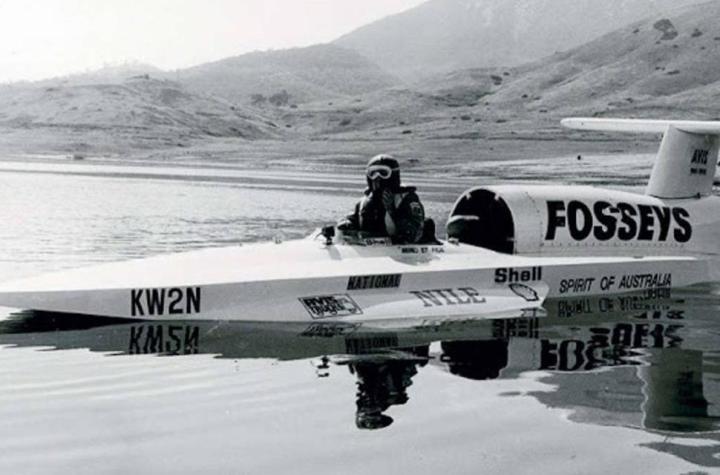
Believe it or not, the current World Unlimited Water Speed Record was set by an Australian motorboat racer named Ken Warby, in a wooden boat called the Spirit of Australia that he built in his back yard. On October 8, 1978, on the Tumut River near Sydney, Warby took the boat up to a blistering 317.59 miles per hour — shattering the previous record of 288.59 miles per hour set a year prior.
It’s worth noting, however, that two separate one-kilometer runs must be recorded in order to qualify for the World Unlimited Water Speed Record, and the average speed of both run becomes the official speed. Therefore, Warby’s second run was even faster than the official record — 328 mph, to be exact — when he set the record in Australia.
In order to achieve such an incredible speed, Spirit of Australia had to be outfitted with a powerful engine — a Westinghouse J34 jet engine, in fact. The Westinghouse Aviation Gas Turbine Division developed the engine in 1940, engineering it to produce more than 3,000 pounds of thrust, which explains how the tiny wooden craft was able to move so quickly.
The act of setting such a record is extremely dangerous. Since the 1930s, 85 percent of all who have attempted to set a new record have met their end. Even Donald Campbell, Warby’s childhood hero and the British land and water speed record holder (who held consecutive water speed world records from 1955 to 1964), died attempting to set another record in 1967 after his boat went airborn mid-run. Despite this, Warby wanted to become the first Australian to set the record. Even in the face of such deadly odds, motorboat enthusiasts all over the globe covet the World Unlimited Water Speed Record, many of whom put everything on the line every year in an attempt to reach new speeds.
Prior to 1978, America and Britain continually went back and forth as record holders, until Warby claimed the record for Australia. Warby’s historic run unseated the American boat Hustler and pilot Lee Taylor, who was the first person to overcome Donald Campbell and the Blue Bird K7, the latter of which had set consecutive records from July 1955 to December 1964. Ever since Warby set the record, Spirit of Australia has gone unbeaten, and the record title remains with the Australian pilot. Several projects are currently underway to break the 318 mph ceiling, including Britain’s Quicksilver, America’s American Challenge, and several others.
Not to be outdone, Warby has passed along the racing torch to his son Dave, and both began construction on Spirit of Australia II in 2013. The followup craft is said to be equipped with twin Rolls-Royce Orpheus 803 jet engines. The original Spirit of Australia is now on display at the Australian National Maritime Museum. Whether Dave will follow in his father’s footsteps and attempt his own record-setting in the Spirit of Australia II remains to be seen, but in the meantime, Ken Warby will be enjoying his retirement and the satisfaction of achieving his lifelong dream — and living to tell the tale.

